#AIinDataAnalysis
Explore tagged Tumblr posts
Text
AI in Image and Video Processing Data Analysis Tools
"AI in Image and Video Processing Data Analysis Tools" explores how artificial intelligence is transforming image and video data analysis. By leveraging deep learning and computer vision, AI tools can analyze, enhance, and interpret visual content, making it easier to extract valuable insights. These advanced tools are widely used in industries like healthcare, security, and entertainment to automate tasks and improve accuracy.
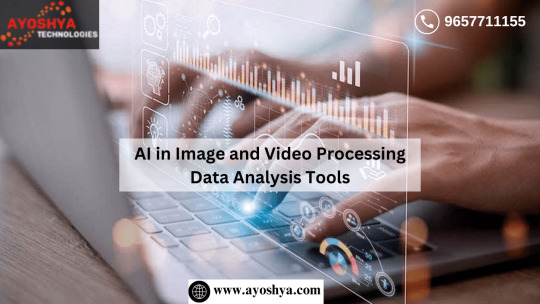
#AIinDataAnalysis#ImageProcessing#VideoProcessing#AIinTech#ComputerVision#DataAnalysisTools#MachineLearning#ArtificialIntelligence#AIDeepLearning#VisualDataAnalysis
0 notes
Text
Mapping the Future: Generative AI Influence on Data Insights in 2024!

Unlock the potential of generative AI in data analysis with our expert-driven exploration. As a premier generative AI development company, we offer unparalleled insights into the trends and predictions shaping 2024. Join us on this journey to the forefront of innovation in data analytics.
#GenerativeAIDevelopmentCompany#GenerativeAI#AIInDataAnalysis#TechTrends#FutureTechTrends#PredictiveAnalytics#AIforBusiness#DataDrivenDecisions#GenerativeAITrends#GenerativeAITrends2024
0 notes
Text
Data Analysis Made Easier with Chat GPT | Advanced Tips and Tricks | ai data analyst
youtube
"Unlock the potential of data analysis with ChatGPT in this advanced tips and tricks video. Discover how AI data analyst ChatGPT can streamline data insights, simplify complex tasks, and elevate your data analysis game. From data visualization to pattern recognition, we'll explore the capabilities that make data analysis easier and more efficient. Don't miss this opportunity to harness the power of AI in data analysis."
#DataAnalysis#ChatGPT#AIAnalyst#DataInsights#AdvancedTips#DataAnalytics#ArtificialIntelligence#DataVisualization#PatternRecognition#AIinDataAnalysis#Youtube
0 notes
Text
How Does AI Work: A Comprehensive Guide to Understanding
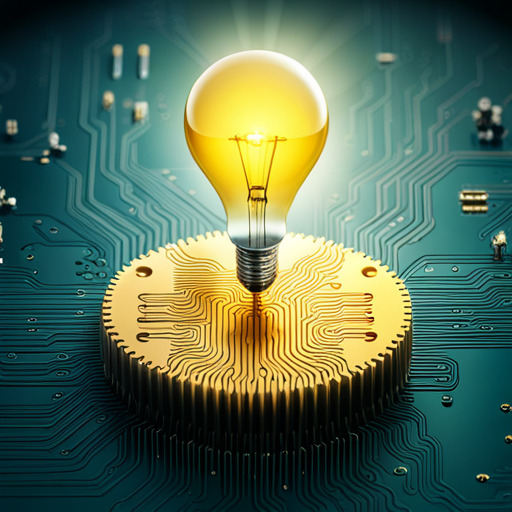
How Does AI Work?
The term "Artificial Intelligence" (AI) has recently become quite popular. The tech industry. But what exactly is AI? How does it work? And how is it shaping our world?
The Beginnings of AI: A Historical Perspective

How Does Ai Work? The Origin of the Concept of AI The concept of AI originated in the mid-20th century when computer scientists started to explore the possibility of developing machines that could mimic human intelligence. In 1956, the term "Artificial Intelligence" was coined at the Dartmouth Conference, signifying AI's birth as a study discipline. The Evolution of AI: From Theory to Practice Throughout the years, AI has transformed from a theoretical concept into a practical instrument that has revolutionized numerous industries. Advances in computational power, data availability, and algorithmic techniques have propelled the development of AI, allowing for the creation of intelligent machines that can perform tasks that were once believed to be exclusive to humans.
Understanding the Fundamentals of AI

Understanding The Fundamentals Of Ai Defining AI: What It Is and What It Is Not The term AI stands for Artificial Intelligence and pertains to computer science. Deals with creating intelligent machines. It deals with creating intelligent machines.t seeks to construct systems for tasks requiring human intelligence. These responsibilities include learning from experience, comprehending natural language, recognizing patterns, solving problems, and making decisions. The field of computer science that concentrates on AI is all about... the development of intelligent machines. Seeks to construct systems for tasks requiring human intelligence. The Principal AI Components: Deep Learning and Machine Learning Machine Learning (ML) and Deep Learning (DL) are the pillars of artificial intelligence (AI). ML teaches machines to learn from data and enhance performance over time without being explicitly programmed. DL, a subset of ML, entails training artificial neural networks on voluminous amounts of data and employing them to make predictions or decisions. For example, AI can predict the price of a flight based on the airline, origin airport, destination airport, and departure date. It learns from historical data on ticket prices and applies this knowledge to forecast future prices.
How Does AI Work Step-by-Step?
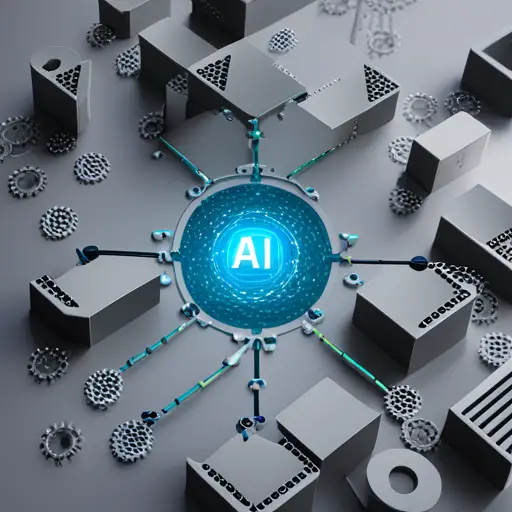
How Does Ai Work Step-By-Step? The AI Process: A Step-by-Step Deconstruction Many stages comprise the AI procedure: data collection, preprocessing, model training, model evaluation, and model deployment. Data is gathered from multiple sources and preprocessed to eliminate errors or inconsistencies. The data that has been preprocessed is then used to train an AI model. The performance of the model Using a distinct data set, the model's performance is assessed. If the model's performance is adequate, it is deployed for actual use. Applying this method is using AI in healthcare to predict whether a patient has diabetes. Inputs for this case include the patient's number of pregnancies (if female), glucose level, blood pressure, age, and insulin concentration. The Function of Data in AI: Providing Fuel for the AI Engine AI heavily depends on data, allowing machines to learn from past experiences and predict. The more access an AI system has to high-quality data, the greater its performance. How AI employs neural networks to process information and establish data connections is apparent. These neural networks function similarly to the human brain, enabling AI to process immense data sets and go "deep" in drawing references, forming connections, and weighing input.
The Complicated Nature of AI: How Does AI Work?
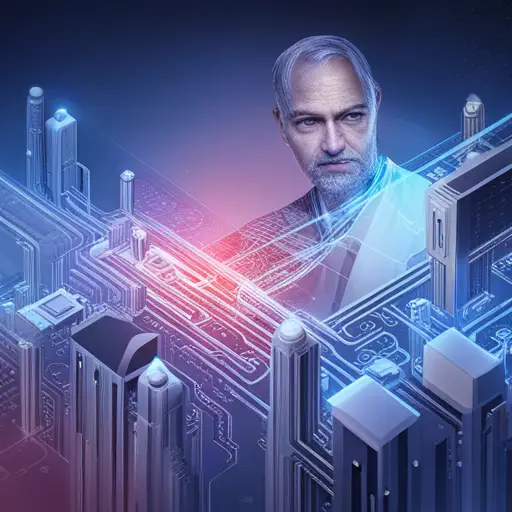
The Complicated Nature Of Ai: How Does Ai Work? The AI Algorithms: The Mind Driving AI AI algorithms constitute the brain of AI. The principles or instructions guide learning an AI system. Different kinds of algorithms are utilized. Regression algorithms are used for prediction tasks, while classification algorithms are used for categorization. The AI Models: The Functionality Blueprint for AI AI models serve as the blueprint for AI capabilities. They represent the AI system's mathematical and computational structure. Once an AI model has been trained on a dataset, it can make predictions or decisions based on new data.
How does AI learn and function?
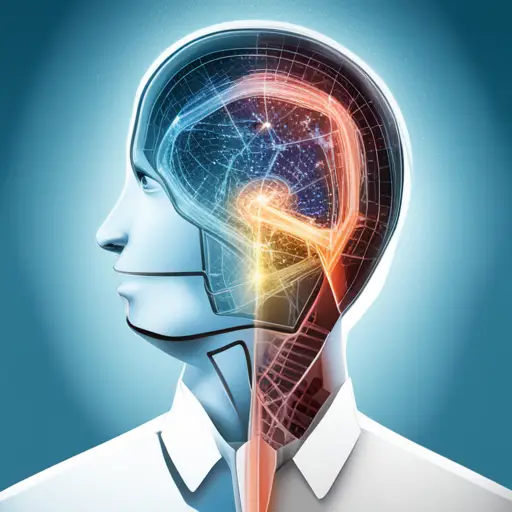
How Does Ai Learn And Function? The AI Learning Process: Supervised, Unsupervised, and Reinforcement AI systems can learn through various methods, such as supervised, unsupervised, and reinforcement learning. In supervised learning, an AI system is trained on a labeled dataset, i.e., a dataset for which the correct response is known. In unsupervised learning, an AI system is trained on an unlabeled dataset, i.e., a dataset for which the correct response is undetermined. In reinforcement learning, an AI learns by interacting with its environment and receiving feedback through rewards and consequences. Neural Networks' Role in AI Learning Neural networks are essential to AI intelligence. Neural networks Modeled after the human brain, neural networks consist of interconnected layers of nodes or "neurons" that process and learn from data. Two critical areas of artificial intelligence are image recognition and natural language processing. Complex tasks that neural networks perform exceptionally well.
AI in Action: How Does AI Work in the Real World?

Ai In Action: How Does Ai Work In The Real World? Real-World Implementations of AI: From Smartphones to Driverless Vehicles AI has become indispensable daily, powering smartphone virtual assistants such as Siri and Alexa. In the healthcare sector, AI is being used to predict patient risk factors, assist in diagnosis, and even in robotic surgery. Google's DeepMind, for example, has developed an AI system that can diagnose eye diseases as accurately as top doctors. The finance industry uses AI for fraud detection, risk assessment, and algorithmic trading. Companies like JPMorgan Chase use AI to analyze legal documents and contracts faster and more accurately. In retail, AI is used for personalized recommendations, inventory management, and customer service. A prime example is Amazon's recommendation engine which uses AI to suggest products to customers. It is present in our vehicles and enables automatic braking and self-parking features. It regulates intelligent home devices such as thermostats and lighting systems. And it exists in our workplaces, automating repetitive duties and providing data-driven insights. AI is also utilized in various applications, including the automation of residential appliances and voice recognition systems. It is also utilized in self-driving vehicles, live chatbots, interactive video games, wearable sensors and devices, biosensors for medical purposes, and stock trading computer advisors. The Influence of AI on Diverse Industries AI is transforming numerous industries, including, but not limited to, industries such as healthcare, finance, and retail. Transportation. In healthcare, AI is utilized for disease prediction and diagnosis, drug discovery, and patient care. AI is used in finance for detecting deception, managing risks, and making investment decisions. The retail industry uses AI for personalized marketing, inventory administration, and customer service. Moreover, AI is used in transportation for route optimization, traffic management, and autonomous vehicles.
The Future of AI: Trends and Forecasts
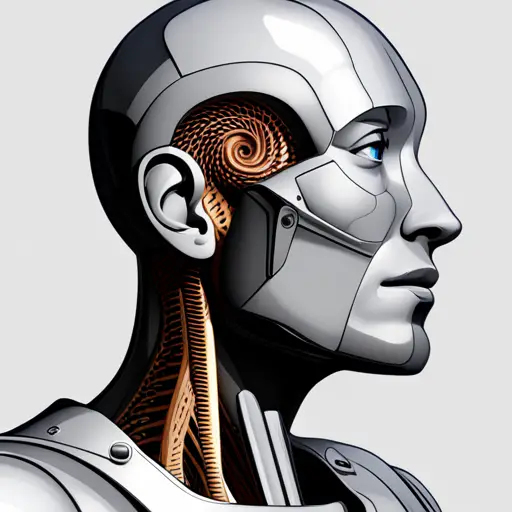
The Future Of Ai: Trends And Forecasts What's Next for Artificial Intelligence (AI)? Every day, new advancements are made in AI, which is swiftly advancing. In Natural Language Processing (NLP), transformer-based models like GPT-3 and BERT have revolutionized how machines understand and generate human-like text. In computer vision, advancements have led to the development of AI systems that can identify objects, people, and emotions from images and videos. This technology is used in self-driving cars, facial recognition systems, and more. AI is also being increasingly used in healthcare and finance. For instance, AI predicts disease outbreaks, assists in patient care, and automates trading. Developing more sophisticated AI models that can manage more complex tasks and make more accurate predictions is one of the leading trends in AI. In natural language processing, for instance, we are witnessing the rise of transformer-based models that can comprehend the context and nuances of human language. Integration of AI with other technologies such as the Internet of Things (IoT) and blockchain, is another trend. AI and IoT facilitate the development of Intelligent devices and systems that can sense. Learn, and act based on the data they accumulate. In the meantime, combining AI and blockchain creates new opportunities for developing secure and transparent AI applications. AI's Obstacles and Opportunities Despite AI's progress, there are still numerous obstacles to surmount. The issue of data privacy and security is one of the major obstacles. As AI systems rely on vast data, this data must be handled responsibly and securely. Another difficulty is the possibility of AI bias. If the data used to train an AI system is biased, so will the system's predictions and decisions. Therefore, it is essential to use diverse and representative datasets when training AI systems. However, AI also presents numerous opportunities. It can solve complex problems, boost productivity, and increase our quality of life. We can unleash these opportunities and create a better future if we continue to innovate and stretch the limits of what is possible with AI.
The Ethics of AI: Maneuvering the Moral Terrain
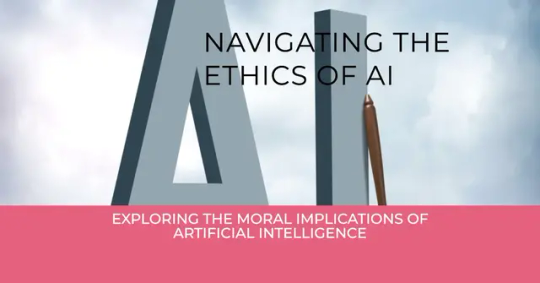
The Ethics Of Ai: Maneuvering The Moral Terrain The Ethical Considerations in AI: Balancing Responsibility and Innovation Considering the ethical implications as AI becomes increasingly integrated into our lives and society is essential. How do we ensure the ethical use of AI? How do we safeguard the privacy and data of individuals in a world dominated by AI? How do we prevent AI bias and ensure that AI decisions are fair? Whether or not to use particular technology to solve a problem must be addressed. Ensuring Fair and Responsible Use of AI: The Regulatory Landscape In AI, there are regulatory considerations in addition to ethical considerations. Governments worldwide are devising regulations and guidelines for AI to ensure it is used fairly and responsibly. These regulations address data confidentiality, AI transparency, and AI accountability. Adherence to these regulations can increase confidence in AI and ensure its beneficial application. In the European Union, for instance, the General Data Protection Regulation (GDPR) establishes stringent guidelines for data privacy, including how AI systems can acquire, store, and use personal data. It safeguards the privacy rights of individuals and ensures that AI is used responsibly and ethically.
The Function of AI in Data Analysis: Leveraging the Potential of Data
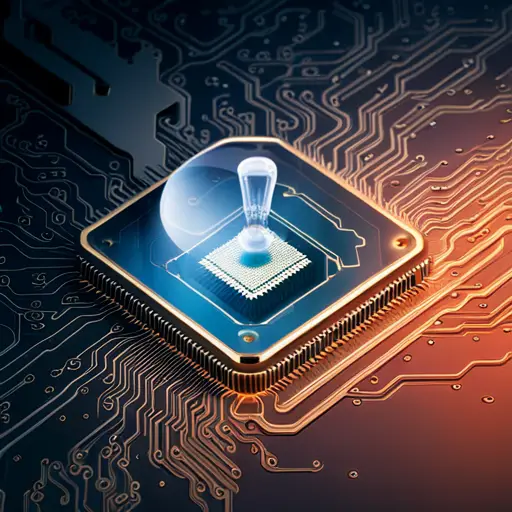
The Function Of Ai In Data Analysis: Leveraging The Potential Of Data AI in Data Mining: Data Value Extraction AI is indispensable for data analysis, particularly data mining. Data mining is the process of deriving useful information from vast datasets. AI's ability to analyze large quantities of data and recognize patterns makes it a potent instrument for data mining. It can aid organizations in making informed decisions, identifying opportunities, and enhancing operations. AI in Predictive Analytics: Future Forecasting Predictive analytics is a second area where AI excels in data analysis. Predictive analytics involves making predictions using historical data. Given its capacity to learn from data and make predictions, AI is optimal for predictive analytics. It can assist businesses in predicting trends, anticipating consumer demands, and planning for the future. AI can predict consumer behavior in the retail industry, for instance. AI can forecast which products they will likely purchase by analyzing a customer's past purchases and perusing habits. It enables companies to personalize their marketing efforts and enhance customer satisfaction.
Intelligent Machine Construction at the Intersection of AI and Robotics

Intelligent Machine Construction At The Intersection Of Ai And Robotics The Role of AI in Robotics: Giving Machines Life AI and robotics are closely intertwined disciplines. AI gives robots intelligence, allowing them to perceive their surroundings, make decisions, and perform tasks autonomously. AI is revolutionizing the field of robotics, from industrial robots that automate manufacturing processes to service robots that assist humans with tasks such as housekeeping and caregiving. In the healthcare industry, for instance, robotics propelled by AI assist surgeons during complex procedures, enhancing precision and reducing the risk of complications. Examples of AI Robots in Real-World Applications: From Manufacturing to Healthcare There are many examples of AI vehicles in the actual world. AI devices are used in manufacturing for assembly, inspection, and packaging. AI devices are used for surgery, rehabilitation, and patient care in healthcare. These examples demonstrate the potential for AI robots to increase productivity, accuracy, and efficiency in various industries. In the automotive industry, AI robots are utilized on assembly lines to increase production efficiency and decrease errors. AI devices are used for patient rehabilitation in the healthcare industry, assisting patients in regaining motor skills following a stroke or injury.
Impact of AI on the Employment Market: Danger or Opportunity?
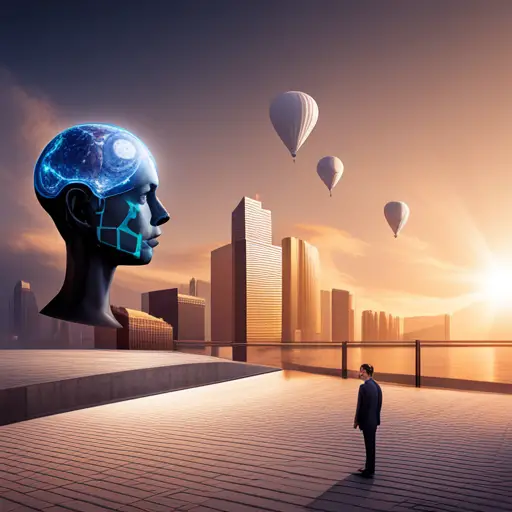
Impact Of Ai On The Employment Market: Danger Or Opportunity? The Influence of AI on Employment: Job Loss or Job Creation? One of the most significant concerns is the impact of AI on the job market. AI can indeed automate specific tasks. Duties and potentially eliminate some jobs; it is also true that AI can generate new opportunities and employment. The advent of AI, for instance, has increased the demand for AI specialists, data scientists, and other tech professionals. In addition, automating mundane duties creates jobs in the technology sector and enables professionals in other disciplines to enhance their responsibilities and boost their productivity. The Skills Required in a World Driven by AI: Planning for the Future As AI continues transforming the employment market, we must acquire the necessary skills for a world dominated by AI. These abilities include technical abilities, such as programming and data analysis, and emotional abilities, such as critical thinking and creativity. By acquiring these skills, we can prepare for the future and capitalize on the opportunities presented by AI. The advent of AI, for instance, has increased the demand for AI specialists, data scientists, and other tech professionals. In addition, by automating mundane duties, AI has the potential to automate routine tasks, freeing up Humans should focus on more complex and creative tasks. Endeavors.
AI's Transformative Potential

Ai's Transformative Potential AI is a revolutionary technology that is altering our world. Leading experts in the field of AI echo this sentiment. Andrew Ng, a renowned AI expert and co-founder of Coursera, has said, 'Artificial intelligence is the modern equivalent of electricity. Like electricity revolutionized multiple industries a century ago, AI will now bring the same transformation.' Similarly, Fei-Fei Li, a leading AI researcher and professor at Stanford University, believes that 'Many people claim that our era is the next Industrial Revolution. AI is undoubtedly one of its driving forces. Comprehending how AI operates We can leverage its power to solve complex problems, make intelligent decisions, and build a better future. As we continue to investigate the potential of AI, we must consider its ethical implications and work toward a future in which AI is used responsibly and for the benefit of all. The future of AI is in the hands of those who develop and regulate it. Prepare yourself for an exciting journey into the future of AI! Read the full article
#AIandEmployment#AIandRobotics#AIEthics#AIinDataAnalysis#AIinRealWorld#ArtificialIntelligence#DeepLearning#FutureofAI#HowDoesAIWork?#MachineLearning#NeuralNetworks
1 note
·
View note
Text
Tired of Data Chaos? Generative AI Offers Clarity in Decision-Making

Drowning in data? Generative AI to the rescue! Say hello to clear decision-making and wave goodbye to chaos, all thanks to Generative AI in data analysis and decision-making. By harnessing the power of Generative AI, you'll navigate through the sea of information with ease, ensuring every decision is backed by clarity and precision.
#GenerativeAIDevelopment#DataAnalysis#DecisionMakingAI#DataDriven#DataDrivenInsights#AIinDataAnalysis
0 notes